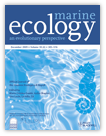Habitat Structure, Disturbance, and Equilibrium in Crustacean Communities*
*Presented at Second International Conference on Biology and Evolution of Crustacea, Australian Museum, Sydney, May, 1980.
Abstract
Abstract. Using data from studies on alga-dwelling harpacticoid copepods from New Zealand and Britain and shallow water decapods from a variety of habitats in the Pacific and Caribbean, an analysis is made of the contribution of physical and biotic habitat structures to the generation and maintenance of crustacean species richness. The relation between the number of species and the complexity of the habitat is, in equilibrium communities, positive and essentially linear. Accordingly, Gray's (1979) and Stenseth's (1979) theoretical predictions are endorsed whereby species-abundance curves are, at equilibrium, expected to follow a log-normal distribution, whereas departures from the log-normal are anticipated in disturbed environments. Such departures reflect either increased dominance or inequalities in the species-abundance hierarchy. Because of their adaptable life-history traits, certain opportunist species are identified as those contributing most to departure points. The impact on community equilibrium of natural disturbance processes such as turbidity, exposure, and substratum transience is assessed.




